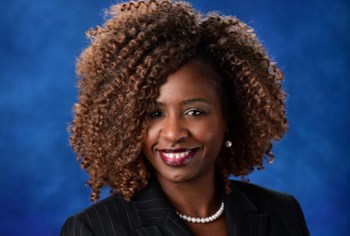Marita Gilbert is the associate dean of diversity and campus inclusion in the College of Osteopathic Medicine. This is repurposed content from the College of Osteopathic Medicine. Read the original piece here.
 My passion for diversity, equity and inclusion work in education began when I was very young.
My passion for diversity, equity and inclusion work in education began when I was very young.
As a teenager, I traveled to Selma, Alabama to a demonstration protesting an educational system called tracking, where young students were placed in different career “tracks.” Most poor, Black and brown students in the area were tracked into trades instead of college preparatory education based on their identity, regardless of academic capability.
During the demonstration, I walked across the Edmund Pettus bridge with my friends. I remember that moment because it connected me to the legacy of advocacy and the idea that you have the right and responsibility to be engaged in what’s happening in your life and in the lives of others around you.
Now, I feel strongly that higher education is the right place to have the crucial conversations our current moment in history necessitates.
Higher ed really is where we are supposed to take on the big questions. We’re supposed to be willing to hear different perspectives in this institution, if none other.
I know that doing this work can be viewed as a difficult process. But at the end of that really difficult work, all of us in the community are better for it. We are all better for having someone challenge us, push us, invite us to see things in a new way, to look at a problem or a challenge from multiple lenses as opposed to just our own.
I think some folks already have this as a talent — it’s just in them to be able to appreciate other folks.
But others have to be taught. It’s a skill that can be learned. And learning is the business — it is the purpose. It is the lifeblood of higher education.
This work is particularly important in the field of medicine, where marginalized communities, especially Black communities, the poor and those with less formal education, have both historic and current experience with health practitioners’ and medical scientists’ inabilities to extend care that honors their humanity and extends empathy.
J. Marion Sims’ gynecologic surgeries on slave women, the Tuskegee Study and countless other less-publicized instances come to mind when I think of events that have contributed to a legacy of intergenerational trauma as a result of misdealings or abuse from medical practitioners.
For me, the story of Henrietta Lacks was life-changing in terms of the way I approach my work. Lacks was saying, “This is what I’m experiencing, and this is what I know to be going on with my body.” And instead of trusting her, seeing her as credible or knowledgeable, she was dismissed until her condition was too far gone.
If the story had stopped there, it would have been bad enough. But it didn’t. Ultimately, it was her cells that were valuable to science — not Henrietta as a human being — and they were used without her consent for years and years and years. They were sent all over the world and even into space.
A lot of times, medical professionals may think diversity, inclusion and fighting racism isn’t in their wheelhouse. But it is — or it should be.
The implications are evident, not only historically, but as we now grapple with the disparate effects of a global pandemic in real time. When we start to think about the ways all of these systems fit together — in higher ed we use the terms interdisciplinary and multidisciplinary, which is also the framework of osteopathic medicine—then we can be our best for our communities.
There’s work to be done to repair underrepresented communities' relationships with medical science and with those of us that practice.
But what I know for sure is that diversity, equity and inclusion work best when it’s not all handed off to one person or laid at the feet of one singular office. Each of us has some work, some role, some piece and that’s where I’ll start.